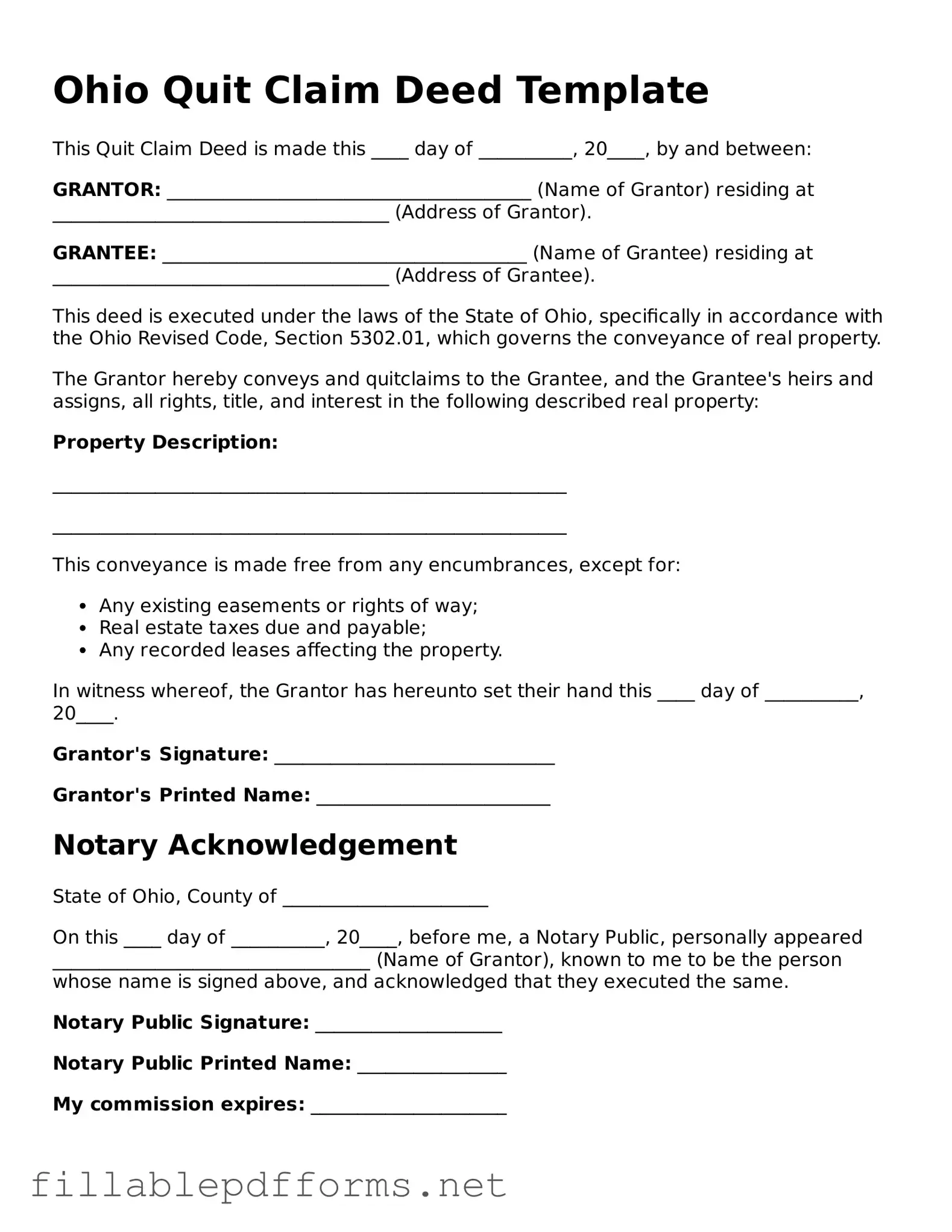The Ohio Deed form serves as a crucial document in real estate transactions, enabling the transfer of property ownership from one party to another. Understanding this form is essential for both buyers and sellers, as it outlines the legal rights associated with the property. The form typically includes vital information such as the names of the grantor (the person selling the property) and the grantee (the person buying the property), a description of the property, and any specific conditions or warranties related to the sale. Additionally, the deed must be signed by the grantor and may require notarization to ensure its validity. It is important to note that different types of deeds exist, including warranty deeds and quitclaim deeds, each serving distinct purposes and providing varying levels of protection for the parties involved. Familiarity with the Ohio Deed form helps ensure a smooth transaction and protects the interests of all parties, making it a key element in the real estate process.
